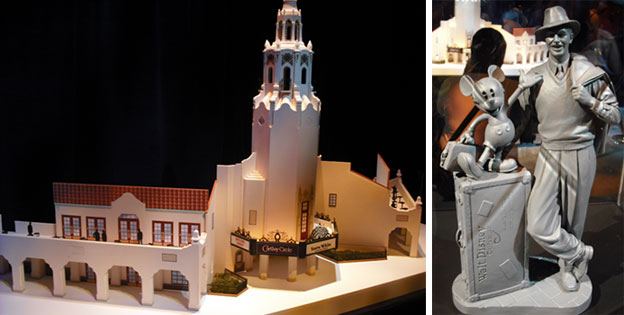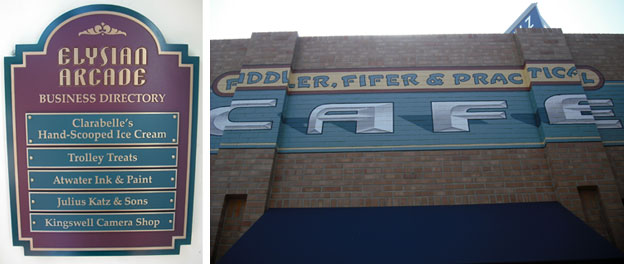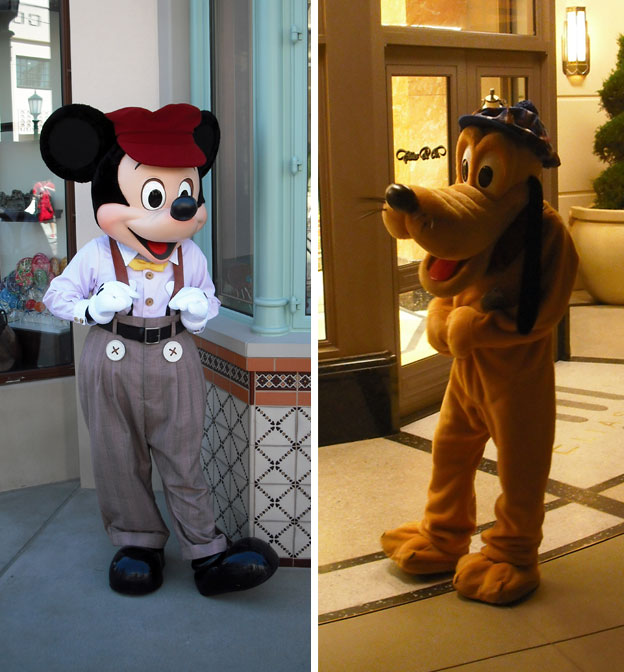Hello friends, in anticipation of the big expansion set to debut at Disney California Adventure (DCA) this weekend I decided to give you a preview of what to look forward to. For those that don't know, DCA is the park opposite of Disneyland in Anaheim. Reviews for the park were lackluster and the attractions were not up to the classic Disney standards. As attendance dropped so did park profitability. The studio needed to turn things around and they did so by changing leadership. Michael Eisner was out and Bob Iger was in. He changed around the organizational structure and switched around the roles of some key management people. Principal among these was making John Lasseter, the Chief Creative Officer at Pixar, into the Creative Consultant for Disney Imagineering. Lasseter and the Imagineers set about trying to put the "heart" back into DCA. It would be a multi-year, multi-billion dollar proposition that didn't sit too well with all of the shareholders. However as Walt had demonstrated years earlier, some things simply could not be compromised because it would not be "cost effective." This expansion was necessary and long overdue for a park that seemed vastly inferior to Disneyland.


The new Buena Vista Street at DCA is a bookend to Main Street USA. The entrance to Disneyland celebrates the influences of a young Walt while DCA highlights his move to LA and the creation of his studio. The sights, sounds and smells of the new entrance all capture the classic Hollywood feel. Right away there is a service station featuring a familiar icon. Oswald has finally returned home and is the mascot for the store. My wife and I wore our rabbit ears from the E3 as we walked the streets. We were asked by visitors and employees about them. The ears weren't on sale yet in the parks and were pending the official opening of the resort. Most everyone there could not wait to get their own rabbit ears. I have a feeling that Mickey will remain the star of Disneyland but Oswald is going to own DCA.
Everywhere we went we were reminded of how Los Angeles looked back in the day. The architecture and signage was spot-on, a mix of Art Deco and the tail end of Art Nouveau. Just like Main Street the area was impeccable and absolutely pristine. Plenty of shade from local trees and benches surrounded the buildings, offering comfort to visitors not used to the hot Southern California summers.

Main Street has several modes of transportation to get visitors from one end to the other, several vintage-looking cars, busses and a horse-drawn trolley. However the entrance to DCA is not nearly wide enough to support that much traffic. That didn't stop the Imagineers from installing a brand new draw. The Pacific Electric Red Car was a staple of Los Angeles during the 20's and 30's. The various Red Car lines ran all over the city from as far east as Redlands to as far north as San Fernando and as far south as Newport Beach, all-in-all around 450 Square Miles were covered by the service. The cars were fondly remembered by those that got a chance to enjoy them just before the 1960's. For those that came after this would be a rare instance to recapture the magic on a reproduction LA street. The cars were not refurbished trolleys either. Just like every vehicle in the park they are built from scratch and only look period correct. These vehicles have to bear tremendous loads, accommodate wheelchairs, service dogs and people with disabilities. They have to be able to run for 16-hour days and be highly reliable. For the Red Cars they wanted to make them electric as well.
The Imagineers went above and beyond the call and created cool, comfortable and wide Red Cars that are electric and offer the smoothest possible ride on rails. The tracks were welded together and grinded down to be perfectly seamless, even the wheel technology uses shock absorbers to dampen the sound and vibrations from the road. The engineers used inductive power transfer (aka wireless charging) to get the cars up and running. The cables suspended above the streets are actually decorative, that way there is no chance of getting hurt should a cable snap. The cars charge themselves at each stop. It's a tremendous feat of engineering to make something that looks so simple be state-of-the-art.

The rest of Buena Vista Street is just as magical as Main Street USA. Every sign and detail tells a story. Some of the names are chosen from actual LA landmarks and streets, while others are based on classic cartoon characters. The signage matches the era as well, helping to reinforce Walt's studios when he was set up at the old Hyperion address. Even the monorail bridge that runs through the middle of the street has been redone to look like the classic Hyperion-Glendale Bridge that was featured in several movies.
Of course what good are all the businesses on Buena Vista Street unless people can do a little shopping inside? Lasseter made sure that there would be merchandise not only exclusive to DCA, but to some of the shops themselves. One of the things that used to make Disneyland merchandise so desirable in the early days was the exclusivity of it. Clothing, art and toys used to be specific for each shop and area of the park. When Eisner took over the company (and after the death of Frank Wells) the focus became more profit driven. Every corner of the park became saturated with mall kiosks selling trinkets. More and more of the shops had begun carrying identical items, turning the stores into very generic outlets. Recently the parks have been going in the opposite direction and are starting to give customers more boutique options. Downtown Disney, an outdoor mall complex has several shops selling exclusive items and now both Disneyland and DCA are starting to get in on the trend as well.

Visitors to DCA can now look forward to exclusive collectables in several shops as well. This exclusivity should help restore some of the Disney name and keep collectors coming back.

The details and themes placed on every building facade applies to the interior of each shop as well. The color selection, flooring, tiles and furnishings all reinforce the turn-of-the-century theme. Even the music piped through the shops is right out of the roaring' 20's. Visitors can't help but imagine that they've stepped back through time.

One of the things that helps separate the Disney parks from the others is the attention to detail. Most parks might have a theme on the outside of a building but few carry it indoors. Disney does that in spades. The walls and windows on Buena Vista Street are covered in vintage or reproduction items. The employees or "cast members" are wearing period correct costumes as well and have some knowledge on the area they represent. No detail is too big or too small for the Imagineers. For example in the candy store there is a refurbished nickel candy machine. The candy bars in the window look authentic but on closer inspection they too carry some inside knowledge of the company and the classic cartoon legacy.

Of course what Disney park is complete without some mascots? Mickey Mouse and Pluto look very dapper, if a little green in their costumes. Don't worry Mickey, I'm sure you'll be a hit!

Buena Vista Street does point visitors in a specific direction but at the end of the street there isn't a castle. Instead visitors can see a reproduction of the classic Carthay Circle theater. This was the same theater that Walt Disney premiered Snow White and the Seven Dwarfs. Walt gambled big on that movie, most people thought that animation could not hold the interest of people, especially children for a full feature. They couldn't have been more wrong as the movie became a global success. The new Carthay Circle is actually a restaurant. Hidden inside is a lounge called 1901. It is exclusively for Club 33 members.

The theater looks great in the day as well as at night. Like the castle it is very regal and inviting. Disney certainly has done well with the expansion, yet the best is yet to come! Come back tomorrow for a review of Cars Land!
As always if you would like to sponsor me please visit my Patreon page and consider donating each month, even as little as $1 would help make better blogs and even podcasts!
No comments:
Post a Comment